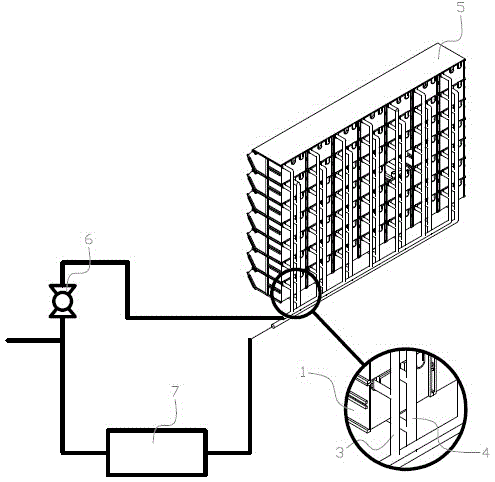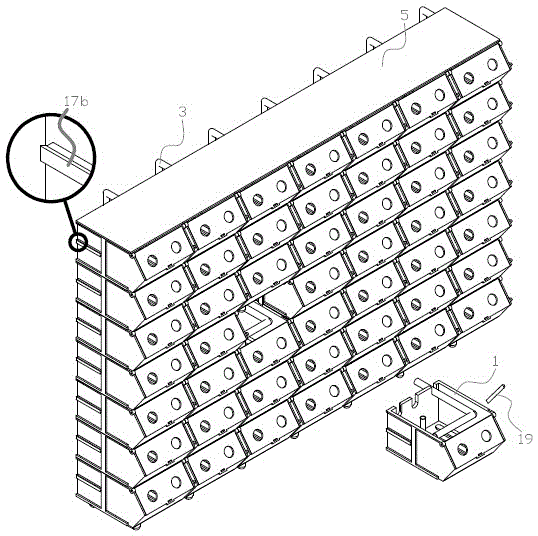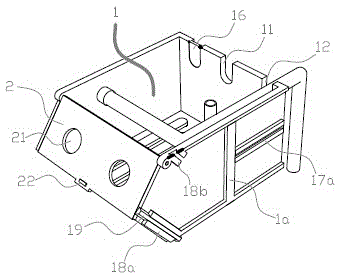Method for cultivating crabs using circulating water with low emission
A circulating water, low-emission technology, applied in fish farming, application, climate change adaptation, etc., can solve problems such as accumulation of aquaculture waste and water quality impact
- Summary
- Abstract
- Description
- Claims
- Application Information
AI Technical Summary
Problems solved by technology
Method used
Image
Examples
Embodiment
[0021] Example: refer to Figure 1 to Figure 6 A method for raising crabs in circulating water with low emission, comprising cultivating crabs in a culture container in an independently separated manner during the crab fattening process, wherein: the culture container is a self-cleaning crab culture device;
[0022] The self-cleaning crab breeding device has a circulating water treatment device 7 and a water pump 6 connected to the fattening water tank unit; the fattening water tank unit contains a box body 1 with an opening on the upper side, and the front edge of the box body 1 is provided with a flap door 2 The bottom surface of the box body 1 has a sewage outlet 14 that can be connected to the drainage control device; the bottom of the box body 1 has raised water guide strips 13 arranged in parallel; The sewage outlet 14 is connected with a drainage pipe 4; the drainage pipe 4 is connected with a circulating water treatment device 7; the circulating water treatment device ...
PUM
| Property | Measurement | Unit |
|---|---|---|
| Arc degrees | aaaaa | aaaaa |
| Height | aaaaa | aaaaa |
Abstract
Description
Claims
Application Information
 Login to View More
Login to View More - R&D
- Intellectual Property
- Life Sciences
- Materials
- Tech Scout
- Unparalleled Data Quality
- Higher Quality Content
- 60% Fewer Hallucinations
Browse by: Latest US Patents, China's latest patents, Technical Efficacy Thesaurus, Application Domain, Technology Topic, Popular Technical Reports.
© 2025 PatSnap. All rights reserved.Legal|Privacy policy|Modern Slavery Act Transparency Statement|Sitemap|About US| Contact US: help@patsnap.com



